The Ruta de las Presas, Route of the Dams, connects La Aldea de San Nicolás with Artenara. Motorists know it as the GC-210. Although it's just as popular with cyclists and hikers as it's one of the most car-free roads on the whole of Gran Canaria.
The Ruta de las Presas, follow the signs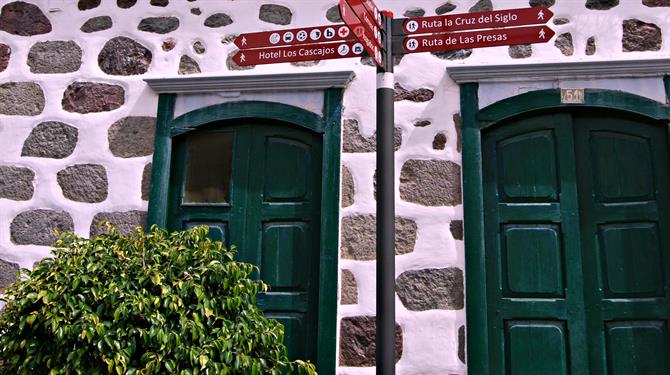
Over Easter, I stayed in La Aldea de San Nicolás. At my mother-in-law´s finca located at the family's tomato farm. It's a popular haunt of ours for holidays.
I like to use it as a springboard for adventure. Previous hikes had seen me trek to the likes of Playa de Tasarte. This time, though, I travelled inland, following the signpost in the municipal centre of La Aldea de San Nicolás.
There's room for all types of travellers on the Ruta de Las Presas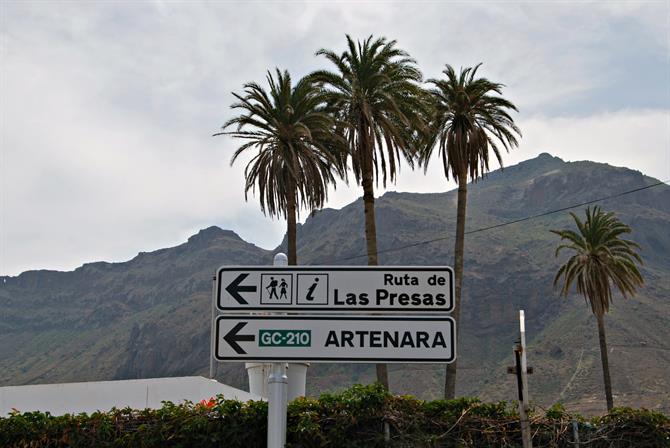
The GC-210 snakes its way from La Aldea de San Nicolás to Artenara. Google Maps estimate that the 28.3km will take you 47 minutes without traffic. Motorists should allow themselves 47 minutes because there's never any traffic jams on this quietest of roads.
Should you wish to go all the way to Artenara by foot, it will take you over nine hours. The Ruta de Las Presas extends to Artenara municipality though not the village itself. As the third and final dam, Presa de la Candelaria, is 21.5km away from your La Aldea de San Nicolás start.
Welcome to agricultural La Aldea de San Nicolás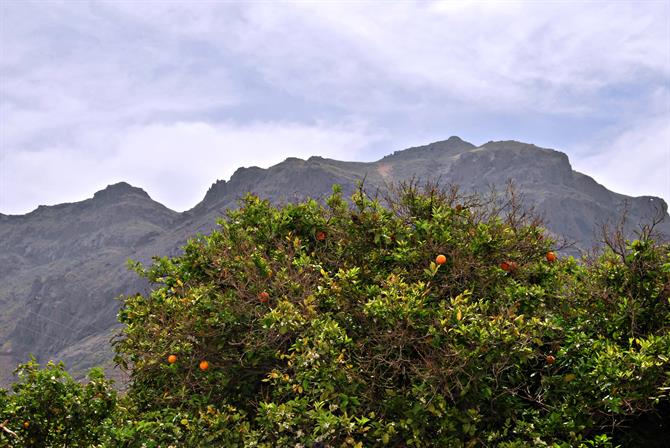
Initally the settlers who made La Aldea de San Nicolás their home following the 15th-century conquest continued the agricultural practices of the aborigines who had occupied the land before them. So cereals were the major crop. These days, they grow more fruit than anything else as you'll discover as you walk past the likes of banana plantations and tomato farms.
I passed this orange tree whilst I was still in La Aldea village. Later, I would see an enticing sign which read "Welcome All Nations: Special Papaya Juice". Unfortunately, this refreshments emporium was shut on a day that felt more like summer than spring. Luckily, I had packed plenty of water to quench my thirst.
Three's the magic number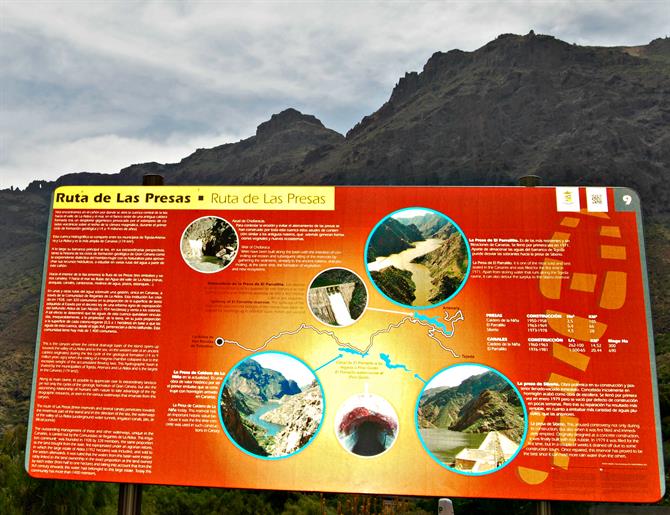
Heading out from the municipal capital, you'll see a board which offers a photographic preview of the dams you'll see on your drive/ride/trek (delete as appropriate). You'll hit them in the following order. First up is the Presa Caidero de La Niña, then the Presa del Paralillo, and last the Presa de la Candelaria.
Green Gran Canaria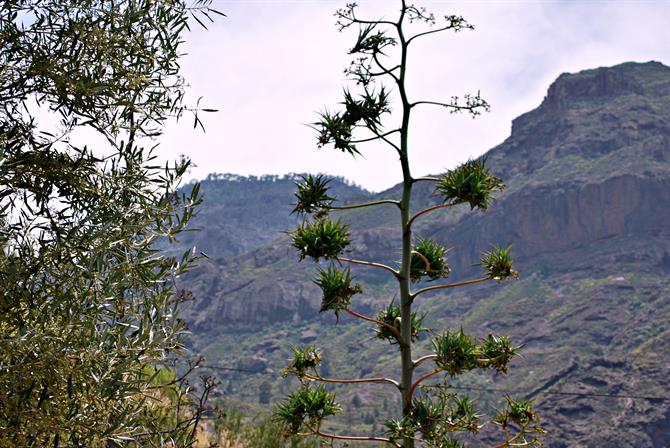
If you imagine Gran Canaria as an oasis of vanilla-coloured beaches and translucent sea, the emerald colour of the interior will come as some surprise. Anything grows on the island. Including flora that's both native to Macronesia and that which has been imported.
Presa Caidero de La Niña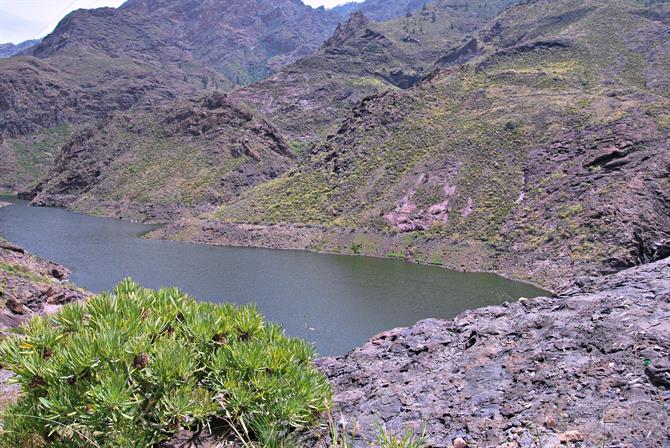
7.3km into your journey, you'll encounter Presa Caidero de La Niña. It's situated on the right-hand side of the GC-210 and is well signposted. There's also a parking space which affords the above view of the dam.
Situated in the Barranco de Siberio, the Presa Caidero de La Niña's walls are 206 metres high. It can hold up to 2,030,000 cubic metres of water and is 46 metres long. One of the island's 69 dams, it dates back to 1957.
Presa del Parralillo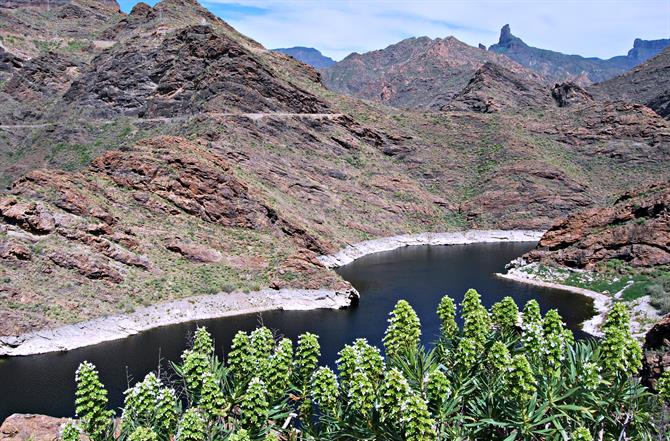
4.7km further along the GC-210, on the opposite side of the road, you'll encounter the Presa del Parralillo. Constructed between the years 1963 and 1969, there are amazing views of Gran Canaria's higher ground including the emblematic Roque Nublo. Although a dip might look inviting, swimming is prohibited in this and the other dams along this route.
Going up on the Ruta de las Presas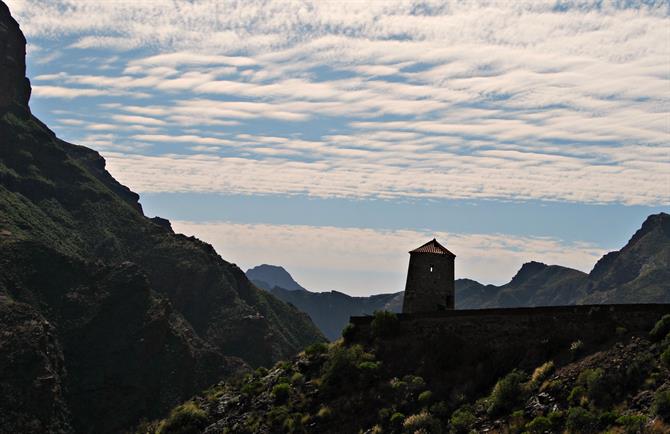
The next stretch of the route is the most taxing on your body if you're walking, particularly on those calf muscles. As the GC-210 spirals higher and higher. Eventually, though, you will reach the Presa de La Candelaria or, more accurately, above it.
Presa de La Candelaria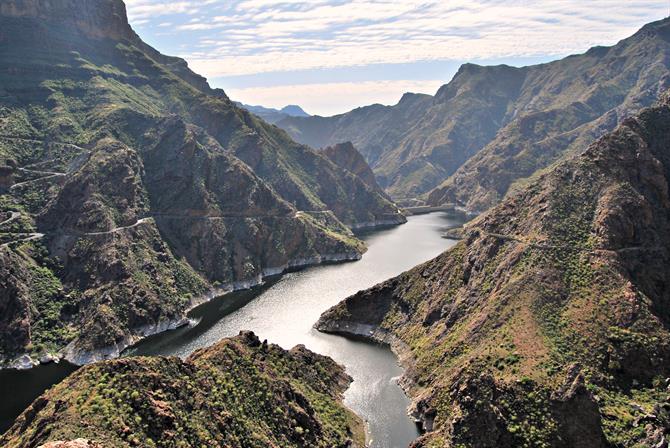
If you've walked like me, take a well-deserved rest. If you've used alternative forms of transport, stop awhile anyway and admire the view. Like stepping into a picture postcard, isn't it?
Clear the way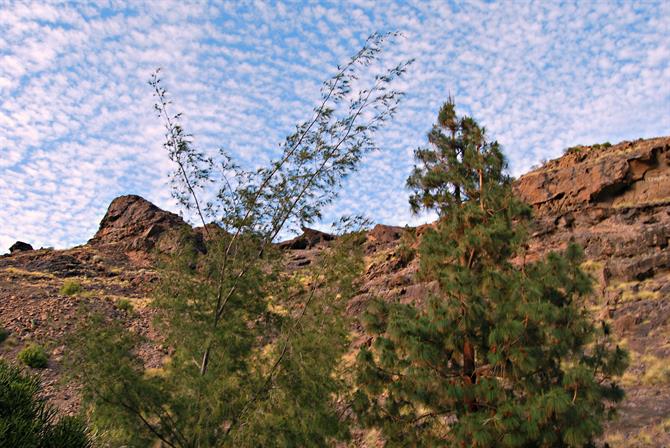
Gran Canaria famously has some of the least polluted skies in Europe. So my return as day turned to night was achieved in the light. Instead of trudging back into town, I instead walked with an extra spring in my step. Happy in the knowledge I had tamed the snake.
